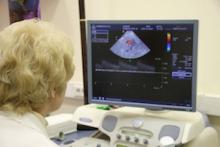Fiber-to-the-Home May Be the Cherry on Top in Traverse City
In Traverse City, Michigan, big plans are underway. The local electric utility is considering constructing a Fiber-to-the-Home (FTTH) network for next-generation high-speed Internet access.
About 10,000 people call the "Cherry Capital of the World" home. The area primarily relies on tourism and high-speed Internet access can help diversify the local economy. At the moment, Traverse City Light & Power (TCLP) is holding planning meetings with community stakeholders to discuss how to build a network to meet the needs of the community.
An Opportunity for Connectivity
The city has been mulling over the possibility of general connectivity for a while - especially citywide Wi-Fi. In 2007, TCLP had just finished installing fiber optic cables to connect electrical substations. They leased some lines to large nonprofit institutions, such as school systems and health facilities, but they still had spare capacity. TCLP realized that they had the potential to expand to residents.
They partnered with the Downtown Development Authority to create a downtown Wi-Fi zone in 2014. The zone automated parking meters and connected tourists, but the Wi-Fi's technological limitations, such as signal strength, soon became apparent. TCLP concluded that citywide Wi-Fi would not be the best option for Traverse City.
Now community leaders are considering using existing fiber, which is already planted throughout the community. TCLP, city and county officials, and other stakeholders have discussed how to develop fiber assets for a FTTH network. The city has several options: a phased approach (connecting the city section by section), a pre-subscriber approach (connecting neighborhoods where people pre-subscribe in great number), an incremental build (slow and steady), or an immediate citywide build (all at once). They also still have to figure out exactly how to cover the costs.
Economic Development and Community Vitality


